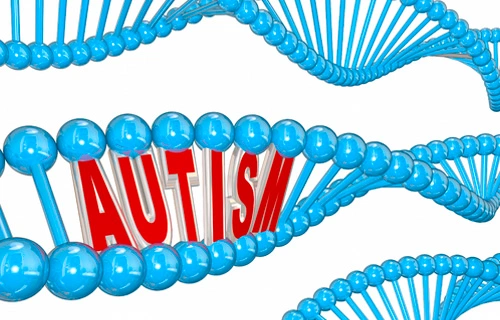Wilson disease gene

If you tested your DNA with a personal genomics service like 23andMe, AncestryDNA, FamilyTreeDNA, MyHeritage or another testing company, you can learn more about your risk factors for hundreds of diseases. By clicking the button above ⬆️, you can upload your raw DNA data file and receive a personalized 250-page health report with research links that is the most comprehensive.
Wilson's disease is an autosomal recessive condition, necessitating that both parents carry at least one genetic mutation responsible for Wilson's disease (an abnormal alteration in the gene) which they pass on to the affected offspring. Each child born to parents who are both carriers holds an equal 25% chance of inheriting two mutations responsible for Wilson's disease. The prevalence of this condition is estimated to affect at least one in 30,000 individuals across various races and nationalities. Wilson disease is an autosomal-recessive disorder characterized by the accumulation of copper in hepatocytes due to pathogenic variants in the copper-transporting gene, ATP7B. Timely detection and treatment are crucial to prevent lifelong neuropsychiatric, hepatic, and systemic impairments. Given the significant diversity in age of onset and clinical manifestations, diagnosing Wilson disease poses challenges for physicians. Direct sequencing of the ATP7B gene serves as the most sensitive and commonly employed confirmatory test, while concurrent biochemical testing enhances diagnostic precision. With over 600 identified pathogenic variants in ATP7B, single-nucleotide missense and nonsense mutations predominate, followed by insertions/deletions and, infrequently, splice site mutations. The prevalence of Wilson disease varies geographically, with specific ethnic groups exhibiting a higher frequency of certain mutations. Although Wilson disease demonstrates a poor genotype–phenotype correlation, a few potential modifiers have been suggested. Ongoing advancements in molecular genetic research continue to enhance our understanding of the disease's pathogenesis, diagnosis, and screening strategies.
Follow the link of the selected polymorphism to read a brief description of how the selected polymorphism affects Copper and see a list of existing studies.
SNP polymorphisms related to the topic Copper:
| rs1061472 | Polymorphisms associated with Wilson's disease. Wilson's disease is an inherited disorder in which excess copper is stored in the body. |
| rs1801248 | Polymorphisms associated with Wilson's disease. Wilson's disease is an inherited disorder in which excess copper is stored in the body. |
| rs1801249 | Polymorphisms associated with Wilson's disease. Wilson's disease is an inherited disorder in which excess copper is stored in the body. |
| rs7334118 | Polymorphisms associated with Wilson's disease. Wilson's disease is an inherited disorder in which excess copper is stored in the body. |
| rs60986317 | Polymorphisms associated with Wilson's disease. Wilson's disease is an inherited disorder in which excess copper is stored in the body. |
| rs76151636 | Polymorphisms associated with Wilson's disease. Wilson's disease is an inherited disorder in which excess copper is stored in the body. |
| rs3991 | |
| rs128648 | |
| rs380417 | |
| rs383700 | |
| rs462281 | |
| rs1955611 | |
| rs2830008 | |
| rs2830051 | |
| rs2830076 | |
| rs2984659 | |
| rs3008821 | |
| rs3784077 | |
| rs6516727 | |
| rs7276036 | |
| rs7283136 | |
| rs7574498 | |
| rs8020095 | |
| rs9689513 | |
| rs10147954 | |
| rs10148212 | |
| rs10817465 | |
| rs11623598 | |
| rs11848862 | |
| rs12515434 | |
| rs13095262 | |
| rs13098532 | |
| rs34259545 | |
About The Author
Li DaliLi Dali, a National Foundation for Outstanding Youth Fund recipient, is a researcher at the School of Life Sciences in East China Normal University. He earned his PhD in genetics from Hunan Normal University in 2007 and conducted collaborative research at Texas A&M University during his doctoral studies. Li Dali and his team have optimized and innovated gene editing technology, leading to the establishment of a world-class system for constructing gene editing disease models.


